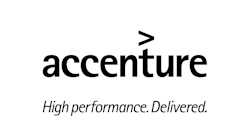With the uptick of urban mobility increasing to more than 2.7 billion trips on U.S. public transportation in the second quarter of 2014, the transport sector plays a pivotal role in fighting climate change. Currently, public transportation contributes about one quarter of energy-related global greenhouse gas emissions and about one fifth of energy use, according to the United Nations.
Various U.S. federal programs focused on State of Good Repair initiatives at bus and rail transit properties are helping drive transportation agencies to address their maintenance issues through mandating performance benchmarks. Investments in more efficient transportation machinery will include green options that will support a healthier environment.
According to the International Atomic Energy Agency (IAEA), a shift to sustainable, low-carbon transportation by the middle of the century could save governments, companies and individuals up to $70 trillion, which is extremely high when compared to the U.S. national debt of $17.6 trillion. Additionally, the UN’s Intergovernmental Panel on Climate Change said a shift could prevent greenhouse gas emissions by transport from doubling by the middle of the century and could achieve the internationally agreed goal of a maximum 2 degrees Celsius rise in global average temperature.
There are a lot of opportunities to build sustainable public transportation systems for transit agencies today with advanced technology. As urban populations spike, members of the millennial generation are discovering that they prefer to get around a city by public transportation, biking or walking. Millennials are known for being digital natives and rapid adopters of new technology. Therefore many cities have begun integrating smart technologies into their transport infrastructure.
Examples of transit agencies embracing a more modern approach to meet the new federal performance benchmarks through green options include:
- Hybrid Electric Buses: Last year, APTA noted that buses transported 5.36 billion passengers, which account for about half of all public transit trips. According to the National Transit Database, they also average about 4.71 miles per gallon. Agencies that have switched to electric buses have report improvements in gas consumption of up to 18 mpg. More work still needs to be done to improve the overall total cost of ownership by making hybrid bus pricing more competitive with diesel and to improve battery life. Still, public operators recognize the environmental benefits that deliver in terms of lower CO2 emissions and lower fuel costs.
- Contactless-Card Fare Management: Transit agencies can offer contactless fare cards that include chips which can be used to pay for transit with the tap of a card. The card acts similarly to a debit card and looks like a credit card, thus eliminating the need for paper transit cards and reducing waste caused by paper transit cards. Currently, 10 transit agencies in Canada are active on the Presto electronic fare payment system which includes a contactless fare card and data-driven back office systems that better analyze ridership, scheduling and overall system performance.
- Proactive Asset Management: Through a more proactive review and assessment of transit assets, transit agencies can address assets that need to be upgraded in order to keep performance at a desired level. The New York Metropolitan Transportation Authority (MTA) is initiating an effort to enhance enterprise asset management through whole-life investment programs in order to maintain asset performance. Optimal asset performance will lower the negative impact on the environment.
- Real-Time Asset Tracking: Knowing the volume, location and trends of ridership in real time allows for greater customization of the amount of vehicle assets deployed on transit routes and help disperse the volume more evenly among different modes of transportation. The Dubai Roads and Transport Authority (RTA) announced this month that they will be collecting real-time data from all modes of transportation, including roads, Metro, tramways and buses, in order to support a jam-free traffic city. This can lead to more efficiency, less traffic and less pollution.
From a sustainability perspective, the role of technology has always been a question — some perceive it to be part of the problem while others view it as part of the solution. The rise of smart cities in the digital era has become a significantly higher priority as the focus shifts to looking into more environmentally friendly solutions. The consumer market demand is strong and most businesses find it to be a more efficient way to operate.
Michael Wilson is managing director of Public Transportation for North America at Accenture.




